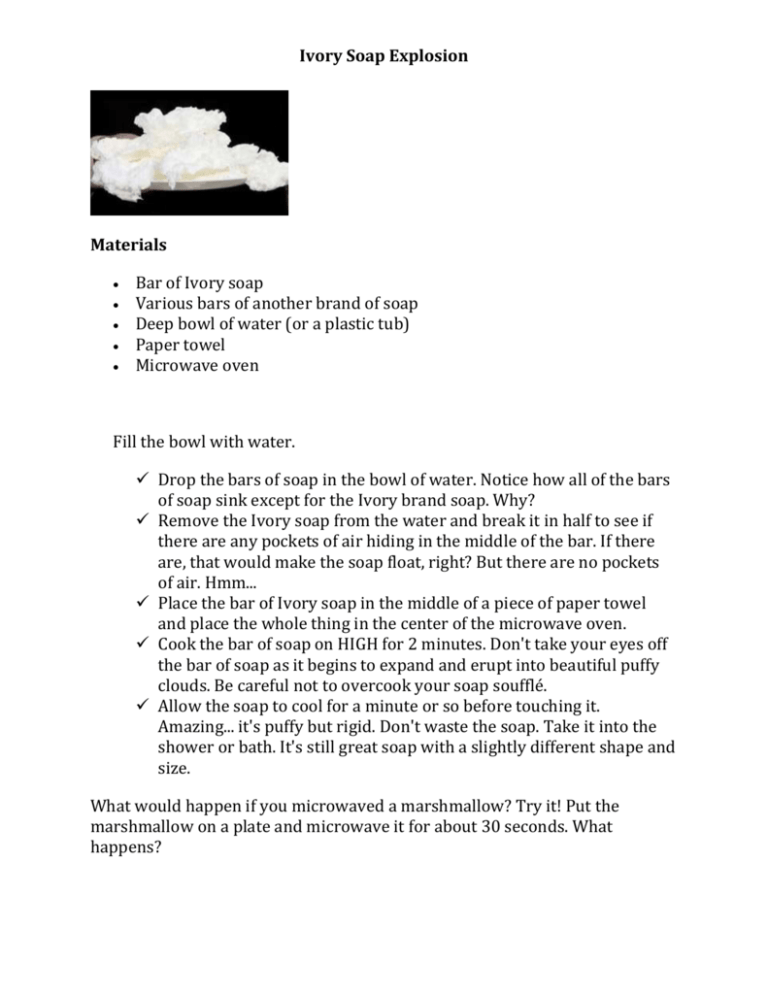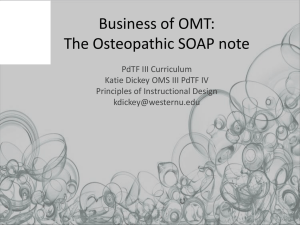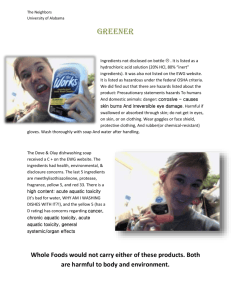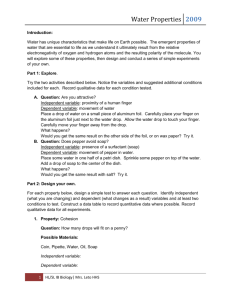Fill the bowl with water.
advertisement

Ivory Soap Explosion Materials Bar of Ivory soap Various bars of another brand of soap Deep bowl of water (or a plastic tub) Paper towel Microwave oven Fill the bowl with water. Drop the bars of soap in the bowl of water. Notice how all of the bars of soap sink except for the Ivory brand soap. Why? Remove the Ivory soap from the water and break it in half to see if there are any pockets of air hiding in the middle of the bar. If there are, that would make the soap float, right? But there are no pockets of air. Hmm... Place the bar of Ivory soap in the middle of a piece of paper towel and place the whole thing in the center of the microwave oven. Cook the bar of soap on HIGH for 2 minutes. Don't take your eyes off the bar of soap as it begins to expand and erupt into beautiful puffy clouds. Be careful not to overcook your soap soufflé. Allow the soap to cool for a minute or so before touching it. Amazing... it's puffy but rigid. Don't waste the soap. Take it into the shower or bath. It's still great soap with a slightly different shape and size. What would happen if you microwaved a marshmallow? Try it! Put the marshmallow on a plate and microwave it for about 30 seconds. What happens? Ivory Soap Explosion How does it work? Ivory soap is one of the few brands of bar soap that floats in water. But when you break the bar of soap into several pieces, there are no large pockets of air inside. If it floats in water and has no pockets of air, it must mean that the soap itself is less dense than water. Ivory soap floats because it has air pumped into it during the manufacturing process. The air-filled soap was actually discovered by accident in 1890 by an employee at Procter and Gamble. While mixing up a batch of soap, the employee forgot to turn off his mixing machine before taking his lunch break. This caused so much air to be whipped into the soap that the bars floated in water. The response by the public was so favorable that Procter and Gamble continued to whip air into the soap and capitalized on the mistake by marketing their new creation as "The Soap that Floats!" Why does the soap expand in the microwave? This is actually very similar to what happens when popcorn pops or when you try to microwave a marshmallow. Those air bubbles in the soap (or the popcorn kernels or the marshmallow) contain water. Water is also caught up in the matrix of the soap itself. The expanding effect is caused when the water is heated by the microwave. The water vaporizes, forming bubbles, and the heat causes trapped air to expand. Likewise, the heat causes the soap itself to soften and become pliable. This effect is actually a demonstration of Charles' Law. Charles' Law states that as the temperature of a gas increases, so does its volume. When the soap is heated, the molecules of air in the soap move quickly, causing them to move far away from each other. This causes the soap to puff up and expand to an enormous size. Other brands of soap without whipped air tend to heat up and melt in the microwave.





